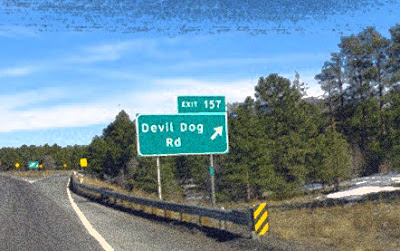Between the
years 1687 to 1711, the Jesuit, Eusebio Francisco Kino, founded missions in and
around the Tubac area in Arizona. His
thought was to manipulate the local Native Americans into becoming
Christians. Tumacacori, which it 4 miles
south of Tubac, was constructed in 1691, and the tiny settlement of Piman was
used as a mission hacienda. By the 1730’s,
Spanish migrants inhabited the area, farming and cattle ranching. In 1751 a gory rebellion devastated the town
of Tubac, and a year later in June, the Presidio San Ignacio de Tubac was initiated. Around 50 armed men were assigned to protect
the presidio, and those living in the area.
“Juan Bautista de Anza II, second commander
of the presidio, led two overland expeditions to the Pacific, resulting in the
founding of San Francisco, in 1776. Several hundred colonists from the
provinces of Sinaloa and Sonora, along with sixty from Tubac, made the trip.
Over 1,000 head of cattle, horses and mules were also gathered to transport
food supplies and tools, provide food on the journey and establish new herds
once the colonists settled at their new home on the Pacific. Following Anza's return to Tubac, military
authorities moved the garrison from Tubac to Tucson in 1776, and the
unprotected settlers abandoned their homes.”
(http://azstateparks.com/parks/tupr/index.html)
Tubac
suffered many decades of attacks from the Apache because of no defense provided
by any forces. Because things got so
bad, the presidio was reenergized in 1787 with Pima Indian troops and Spanish
officers. In 1821, after Mexico gained
its sovereignty from Spain, another severe attack from the Apache left Tubac a
ghost town once more. This small town
wouldn’t see life again until 1853 when it became an element of the Gadsden
Purchase. Thanks to Charles D. Poston
buying the leader’s house and using it as his command center, many more
followed. He started Arizona’s original
newspaper and it went to print for the first time in 1859. Even though Tubac enjoyed being the most
prevalent town in Arizona in 1860, the American Civil War needed the armies
protecting the town to fight the war.
Once again, the Apache took advantage of the vulnerable settlement,
attacked and left the place empty without a single soul around. It tried to bounce back after the war, but
the popularity and mines of Tombstone prevented that from happening.
“In 1974, archaeologists from the University
of Arizona excavated portions of the presidio. In 1976, an underground
archaeological display was finished and visitors can now view portions of the
original foundation, walls, and plaza floor of the 1752 Commandant's quarters,
as well as artifacts representing the various periods of Tubac's unique
history.”























Comments
Post a Comment